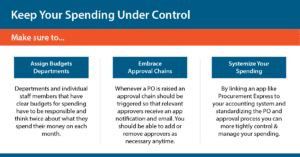One of the most common misfortunes in project management is when your cost overruns your budget. As a project manager, it is your job to locate inefficiencies and correct them so that you can turn a profit. Trying to keep to your project budget can be a challenge when there are many factors that can contribute to cost overruns.
Understanding just a few of these factors that cause overruns and taking steps to correct them, will guarantee an increase in profits, giving you extra money to further streamline your processes and invest in methods to raise revenue.
So why do your projects keep going over budget?
- A mismanaged project can lead to poor budget management and missed deadlines.
- Over time the client may request more additions to the project – more features, better quality, etc. All of these require more time and work. If you are not charging for these additional hours or changes, you are eating into your budget with every change.
- To resolve this, have strict rules on how much you are willing to change in the course of this project, and if the client requests additional services do not hesitate to ask for more money. Better to lose a sale than to work for free.
- A common reason for cost overruns is unplanned project changes. A good example of this is making changes not accounted for in the budget. This could be due to forgetfulness, lack of essential materials or other unforeseen issues.
- “Scope” is the term that defines deliverables expected at the end of a project. Therefore it can be said that all project plans, estimation, schedule, quality and baselines are usually designed based on the initial project scope. Thus, any change in the scope during execution will mean that the entire initial project plan will have to be reviewed and the schedule & quality will have to be redeveloped.
- Having multiple individuals involved in the planning session is a very good way to create a solid plan before you invest too much time and money into the project itself. This will also help you spot problems before they begin.
- The best way to avoid project changes is with proper planning, walk through your project from start to finish with multiple people (managers, contractors, clients etc.) to identify problem areas in advance.
- To keep your eye on all project expenses and see whether you’re ahead or behind of the planned schedule. After your daily site meeting incorporate it in your performance metrics.
- To have the right team is essential to having your budget turn out the way you planned. Appoint people with skill in the right areas or send them for the appropriate training.
- Having a plan and a clearly defined scope with the best managers doesn’t change the fact that if people don’t know what they’re supposed to be doing, you’ll run into massive inefficiencies. By having precise task lists and deadlines for each member of the team, you can be sure they will never run out of tasks to do until the project is completed.
The ultimate purpose of risk identification and analysis is to prepare for pitfalls. This includes preparing for the likelihood that a catastrophe will strike and have a disaster recovery plan in place.
To summarize
Large projects puts strain on existing resources, this occasionally means that projects will go over budget. But if you take the above factors into account you can mitigate the damage and in the long run, find yourself delivering your projects on budgets.
The best way to ensure this level of coordination is to make use of automated expense management software. The right tool will have mobile friendly usability, customized approval rules by project and budget, on-demand reporting and recorded discussions from procure to delivery.
Is your budget overrunning?
Are you missing the important factors to make your budget project a success?



